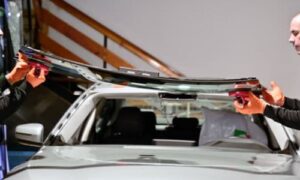As a car owner, it’s essential to have automotive insurance to protect yourself, your passengers, and your vehicle in case of an accident. However, knowing which type is best for you can be unclear with so many different types of car insurance available. This article will explore the various kinds of automotive insurance and their benefits.
Introduction To Auto Insurance
Automotive insurance protects you from financial losses if you’re involved in a car accident. Car insurance can cover property damage, medical expenses, and liability costs. It’s essential to have the correct type of automotive insurance to protect yourself and your vehicle.
1. Liability Insurance
Liability insurance is the most basic type of automotive insurance. It covers the costs of any damages you may cause to other people’s property or injuries sustained by others in an accident. Most states require drivers to have liability insurance. Liability insurance typically has a limit, and you can choose the amount of coverage you want.
2. Collision Insurance
Collision insurance covers the cost of repairs to your vehicle if it’s damaged in an accident, regardless of who was at fault. If your car is totalled in an accident, collision insurance will cover the value of your vehicle. Collision insurance is not required by law but may be necessary if you have a car loan.
3. Comprehensive Insurance
Comprehensive insurance covers damage to your vehicle caused by events other than accidents, such as theft, vandalism, or weather-related incidents. This insurance is not required by law but may be necessary if you have a car loan.
4. Personal Injury Protection (PIP)
Personal Injury Protection (PIP) is “no-fault” insurance because it covers medical expenses and lost wages regardless of who caused the accident. PIP insurance is required in some states.
5. Medical Payments Coverage
Medical Payments Coverage is similar to PIP insurance but only covers medical expenses, not lost wages. It’s optional coverage and may be required if you live in a state with no-fault insurance laws.
6. Uninsured and Underinsured Motorist Coverage
Uninsured and Underinsured Motorist Coverage covers the costs of damages or injuries caused by a driver who doesn’t have enough insurance or no insurance at all. It’s optional but recommended, as many drivers may not have sufficient insurance coverage.
7. Gap Insurance
Gap insurance covers the difference between the actual cash value of your vehicle and the amount you owe on your car loan. If your car is totalled or stolen, gap insurance will pay the difference between what you owe on your loan and the insurance settlement.
8. Classic Car Insurance
Classic car insurance is designed for older, rare, or collectable cars. It provides coverage for the car’s agreed value and offers protection for its unique features.
9. Modified Car Insurance
Modified car insurance is designed for cars that have been altered or customized. It offers coverage for the modifications and the original value of the vehicle.
10. Usage-Based Insurance
Usage-based insurance can help lower the premiums for safe drivers. This insurance calculates premiums based on the driver’s driving habits, such as mileage, speed, and braking patterns. This type of insurance is ideal for drivers who drive less and follow safe driving practices.
Bundling Insurance Policies
Bundling insurance policies can help you save money on your automotive insurance. Many insurance providers offer discounts for bundling multiple insurance policies, such as home and automotive insurance.
Factors Affecting Automotive Insurance Rates
Several factors affect the cost of automotive insurance, including the driver’s age, driving record, location, and the type of car they drive. Younger drivers with a history of accidents and traffic violations may have higher insurance rates than older, more experienced drivers with a clean driving record.
How to Choose the Right Automotive Insurance
Choosing the right automotive insurance can be overwhelming. Researching and comparing different insurance providers and policies is essential before deciding. Consider your driving habits, the type of car you drive, and your budget when selecting the right insurance coverage.
Auto Insurance Quotes Online, Free & Fast | EverQuote (usautoinsurancenow.com)
Conclusion
Automotive insurance is a necessary expense for car owners to protect themselves, their passengers, and their vehicle. Understanding the different types of car insurance available can help you select the right coverage for your needs. Consider your driving habits, budget, and car type when choosing an insurance policy.
FAQs
Does the law require liability insurance?
Yes, liability insurance is required by law in most states.
Can I skip collision insurance?
Collision insurance is not required by law, but it’s recommended, especially if you have a car loan.
What factors affect automotive insurance rates?
Several factors affect automotive insurance rates, including the driver’s age, driving record, location, and the type of car they drive.
How can I save money on automotive insurance?
You can save money on automotive insurance by bundling insurance policies, maintaining a clean driving record, and choosing a car with high safety ratings.
What type of automotive insurance should I choose?
The type of automotive insurance you choose depends on your driving habits, budget, and car type. Researching and comparing different insurance providers and policies is essential before deciding.



